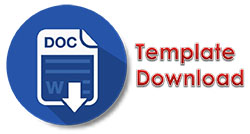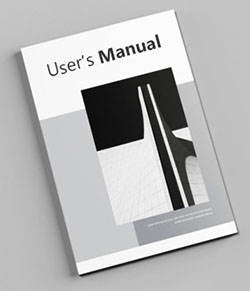Strategic Communication in Religious Media: A Study of Muhammadiyah Digital Public Relations through www.suaramuhammadiyah.id
Abstract
Abstrak: Komunikasi strategis berperan dalam memperkuat identitas organisasi keagamaan serta membentuk persepsi publik. Di era digital, efektivitas komunikasi ditentukan oleh strategi penyebaran pesan. Muhammadiyah mengadopsi Digital Public Relations (PR) guna mempromosikan Islam Berkemajuan melalui www.suaramuhammadiyah.id, yang telah bertransformasi dari media cetak ke digital. Penelitian ini menggunakan studi kasus kualitatif untuk menganalisis strategi konten, keterlibatan audiens, serta peran media digital dalam komunikasi Muhammadiyah. Digital PR memungkinkan interaksi lebih kuat dengan audiens melalui komentar, forum diskusi, dan konten multimedia. Excellence Theory serta Mediatization Theory digunakan guna memahami pemanfaatan platform digital dalam membangun komunikasi simetris dan memperluas dakwah. Hasil penelitian menunjukkan bahwa Digital PR tidak hanya memperluas penyebaran Islam Berkemajuan, tetapi juga merekonstruksi identitas organisasi keagamaan di era digital. Studi ini berkontribusi pada kajian komunikasi keagamaan digital melalui pemahaman tentang peran Digital PR dalam transformasi strategi komunikasi organisasi keagamaan.
Abstract: Strategic communication plays a crucial role in strengthening the identity of religious organizations and shaping public perception. In the digital era, communication effectiveness is determined by message dissemination strategies. Muhammadiyah has adopted Digital Public Relations (PR) to promote Islam Berkemajuan through www.suaramuhammadiyah.id, which has transformed from print to digital media. This study employs a qualitative case study approach to analyze content strategies, audience engagement, and the role of digital media in Muhammadiyah’s communication. Digital PR facilitates stronger interactions with audiences through comments, discussion forums, and multimedia content. Excellence Theory and Mediatization Theory are applied to understand how digital platforms enhance symmetrical communication and expand Muhammadiyah’s outreach. The findings indicate that Digital PR not only broadens the dissemination of Islam Berkemajuan but also reconstructs the identity of religious organizations in the digital era. This study contributes to the discourse on digital religious communication by providing insights into the role of Digital PR in transforming the communication strategies of religious organizations.
Keywords
Full Text:
PDFReferences
Al-Zaman, M. S. (2022). Social mediatization of religion: islamic videos on YouTube. Heliyon, 8(3), e09083. https://doi.org/10.1016/j.heliyon.2022.e09083
Bashir, M., & Aldaihani, A. (2017). Public relations in an online environment: Discourse description of social media in Kuwaiti organizations. Public Relations Review, 43(4), 777–787. https://doi.org/10.1016/j.pubrev.2017.05.004
Brennen, B. S. (2017). Qualitative Research Methods for Media Studies. In Qualitative Research Methods for Media Studies. https://doi.org/10.4324/9781315435978
Brorsson, E. B. (2022). A non-governmental organization’s communication for social change: a qualitative case study of Kvinna till Kvinna (Issue August). Uppsala Universitet.
Go, E., & You, K. H. (2016). But not all social media are the same: Analyzing organizations’ social media usage patterns. Telematics and Informatics, 33(1), 176–186. https://doi.org/10.1016/j.tele.2015.06.016
Gregory, A., & Fawkes, J. (2019). A global capability framework: Reframing public relations for a changing world. Public Relations Review, 45(3), 101781. https://doi.org/10.1016/j.pubrev.2019.05.002
Grunig, J. E., & Grunig, L. A. (2008). Excellence Theory in Public Relations: Past, Present, and Future. Public Relations Research, 327–347. https://doi.org/10.1007/978-3-531-90918-9_22
Grunig, J. E., & Hunt, T. (1984). Managing Public Relations. Wadsworth/Thomson Learning.
Guhl, J., Comerford Senior Advisors, M., Editors, C., Pandith, F., Ali, R., Tiflati, H., Salama-Paul, B., Gerster, L., Farrell-Molloy, J., Baaken, T., & Gatewood, C. (2021). Understanding the Salafi Online Ecosystem: A Digital Snapshot.
Hjarvard, S. (2012). Mediatization and Religion . Nordic Perspectives. Nordic Journal of Religion and Society.
Hjarvard, S. (2020). Three forms of mediatized religion: Changing the public face of religion. In Gosudarstvo, Religiia, Tserkov’ v Rossii i za Rubezhom/State, Religion and Church in Russia and Worldwide (Vol. 38, Issue 2). https://doi.org/10.22394/2073-7203-2020-38-2-41-75
Huda, S., Maulana Mas’udi, M., & Muthohirin, N. (2022). The Rise of Muhammadiyah’s Islamic Da’wah in the Contemporary Era: Transformation to Online Trend and Responses to Islamic Moderation. Progresiva : Jurnal Pemikiran Dan Pendidikan Islam, 11(01), 1–24. https://doi.org/10.22219/progresiva.v11i01.20889
Iswahyudi, I., Safala, U., & Agustina, D. A. (2021). Deradicalization Of Religious Understanding Through The NU Online and Suara Muhammadiyah Website in The Perspective of Critical Discourse Analysis. Dialogia, 19(1).
Knudsen, G. H., & Nielsen, M. V. (2019). Exploring the mediatization of organizational communication by religious communities in digital media. MedieKultur: Journal of Media and Communication Research, 35(66), 101–121. https://doi.org/10.7146/mediekultur.v35i66.106274
Lee, Y. (2022). Dynamics of Symmetrical Communication Within Organizations: The Impacts of Channel Usage of CEO, Managers, and Peers. International Journal of Business Communication, 59(1), 3–21. https://doi.org/10.1177/2329488418803661
Lim, J. R. (2016). Nonprofits’ Public Relations Measurement and Evaluation.
Lock, I., & Ludolph, R. (2020). Organizational propaganda on the Internet: A systematic review. Public Relations Inquiry, 9(1), 103–127. https://doi.org/10.1177/2046147X19870844
Macnamara, J., & Zerfass, A. (2012). Social Media Communication in Organizations: The Challenges of Balancing Openness, Strategy, and Management. International Journal of Strategic Communication, 6(4), 287–308. https://doi.org/10.1080/1553118X.2012.711402
Mahbob, M. H., Ali, N. A. S. M., Wan Sulaiman, W. I., & Wan Mahmud, W. A. (2019). Strategic communication and its role to create an effective communication in organization. Jurnal Komunikasi: Malaysian Journal of Communication, 35(2). https://doi.org/10.17576/JKMJC-2019-3502-04
Page, T. G., & Capizzo, L. W. (2024). Toward a tent-driven model of organizations: Stakeholders, permeability, and multiple identities in public relations theory. Public Relations Review, 50(1), 102429. https://doi.org/10.1016/j.pubrev.2024.102429
Patterson, S. J., & Radtke, J. M. (2009). Strategic communications for nonprofit organizations: seven steps to creating a successful plan (2nd ed.). John Wiley & Sons Inc.
Pribadi, A., & Nasution, N. (2021). Digital transformation to the sustainability of public relations profession in the era of disruption. Commicast, 2(1), 52–57.
Sumarlan, I., & T.I.Ukka, I. (2024). Public Relations to Foster Organization’s Values and Identity: The Case of Muhammadiyah. Komunikator, 16(2), 146–159. https://doi.org/10.18196/jkm.23747
Zerfass, A., Verhoeven, P., Moreno, A., Tench, R., & Verčič, D. (2016). Exploring Trends in Big Data, Stakeholder Engagement and Strategic Communication. Results of a Survey in 43 Countries. In European Communication Monitor. http://www.zerfass.de/ECM-WEBSITE/media/ECM2016-Results-ChartVersion.pdf
Zhou, A., & Xu, S. (2021). Digital Public Relations Through the Lens of Affordances: A Conceptual Expansion of the Dialogic Principles. Journal of Public Relations Research, 33(6). https://doi.org/10.1080/1062726X.2022.2046585
DOI: https://doi.org/10.31764/jail.v8i2.30319
Refbacks
- There are currently no refbacks.
Copyright (c) 2025 Iman Sumarlan, Elis Zuliati Anis

This work is licensed under a Creative Commons Attribution-ShareAlike 4.0 International License.
Al-I’lam: Jurnal Komunikasi dan Penyiaran Islam
Fakultas Agama Islam Universitas Muhammadiyah Mataram.
Alamat Redaksi:
Jln. KH. Ahmad Dahlan No. 1 Pagesangan – Mataram
Telpon 085946008096 | email: [email protected]
INDEXED BY:

.png)
2.png)


























